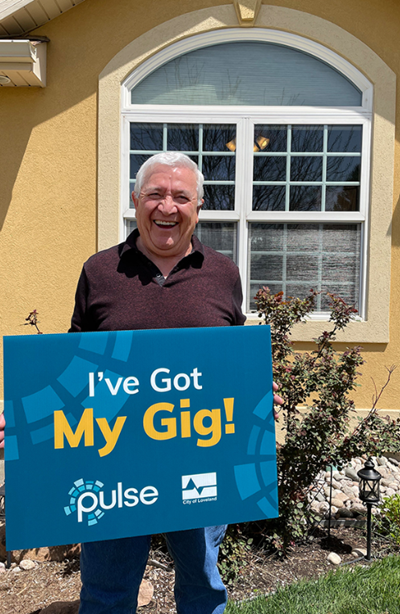
A new study by The Brattle Group found that the FCC’s Affordable Connectivity Program (ACP) generated more savings for taxpayers than it cost. Healthcare savings generated by the low-income program alone more than offset its annual burden to taxpayers, undermining claims that the program was dismantled as an act of fiscal efficiency.
The ACP, part of the 2021 infrastructure bill, provided 23 million low-income households a $30 broadband discount every month. It provided a larger $75 a month discount for low-income residents of widely underserved tribal areas.
The ACP also provided low-income Americans a $100 subsidy to help them afford a laptop, tablet or a desktop computer.
Generally viewed as a rare bipartisan success story, the ACP took direct aim at a primary problem across U.S. broadband: affordability.

But the program was unceremoniously allowed to expire in 2024 after GOP leaders including House Speaker Mike Johnson refused to even bring funding bills to the House floor for a vote, despite widespread support from industry, consumer groups, and even then Republican Ohio Senator JD Vance.
At the time, Congressional Republican leaders claimed their opposition to the ACP was necessary for fiscal efficiency and to combat waste. But the Brattle Group’s new study found that the program’s $6 to $8 billion yearly annual cost was more than paid for by the financial benefits of expanded access to remote telehealth services in rural communities alone.
“Compared to the modest annual cost of $7.3 billion, the total quantified benefits studied in this paper alone are significantly larger,” the authors wrote.
“The overall healthcare savings alone are quadruple the annual funding and can more than offset the costs of the entire ACP. At the subscriber level, Medicaid cost savings generated by switching one physical medical visit for a Medicaid recipient to one telehealth visit, would generate sufficient savings to pay for 3.5 years of ACP support for a Medicaid recipient.”
More specifically, the study found that the $7.3 billion annual program price tag was more than compensated by the $28.9 to $29.5 billion taxpayers would save from access to remote telehealth visits, which are estimated to be 23 percent less expensive than in-person visits.

The report cites other studies noting that telemedicine visits for cancer patients save existing programs between $147 and $186 per visit.
Telemedicine visits with medical specialists average $120 less, and virtual urgent-care visits save $141 compared to in-person clinic visits.
The study also found the ACP generated $3.7 billion in increased annual earnings for students due to expanded remote education opportunities, and $2.1 to $4.3 billion in annual wage gains from expanded labor force participation.
“Thus, compared to the modest annual cost of $7.3 billion, the total quantified benefits studied in this paper alone are significantly larger,” the study authors wrote. “Reinstating the ACP is a fiscally sound policy decision with significant, positive economic and social implications.”
Not The Wasteful Devil Republicans Claim It Is
Last year during the midst of a heated battle to renew funding for the ACP, a collection of Republican lawmakers including Senator John Thune (R-SD), Senator Ted Cruz (R-TX), Rep. Cathy McMorris Rodgers (R-WA), and Rep. Bob Latta (R-OH) blasted the program as “wasteful” in a letter to then FCC boss Jessica Rosenworcel.

“The Biden administration’s reckless spending spree has left America’s current fiscal situation in a state of crisis, with gross debt at nearly $34 trillion,” wrote the lawmakers. “It is incumbent on lawmakers to protect taxpayers and make funding decisions based on clear evidence.”
But the clear evidence shows that American taxpayers greatly benefitted from the program, which generated broad benefits for rural Americans long stuck on the wrong side of the digital divide.
“Unfortunately, our regulatory and legislative structures tend to look at topics in silos,” telecom industry consultant Doug Dawson wrote in his analysis of the study. “Legislators and policy-makers looked at ACP as a broadband issue and did not look at the wider and larger benefits that ACP and the resulting broadband brings to a household and in mass to communities.”
When Republican lawmakers refused to fund an expansion for the program, 23 million Americans suddenly faced significantly higher broadband bills.
Industry estimates suggested that about 10 percent of ACP wireline subscribers would be forced to disconnect their lines due to affordability issues in the wake of ACP’s demise. Those estimates were significantly worse for wireless subscribers, 70 to 80 percent of which (approximately 9 to 10 million subscribers) were forced to disconnect access due to higher costs.
Efforts to kickstart the ACP back to life have seen muted success on the federal level, leaving states left holding the bag on attempts to drive affordable access to marginalized communities.
Dismantling Monopoly Power And Empowering Local Communities

The ACP was well intentioned and hugely beneficial, but it only applied a bandaid on the real problem: consolidated monopoly power and telecom market failure.
U.S. broadband remains patchier, slower, and far more expensive than many developed nations thanks to regional consolidated monopoly power, which often stunts any incentive for dominant providers to compete on price, speed, network reach, or customer service quality.
Paying these regional monopolies to temporarily lower their prices – which wouldn’t be high in the first place if they hadn’t waged a protracted, multi-decade war on competition and lobbied or bribed state and federal lawmakers into compliance – isn’t a long term solution.
A more permanent fix for inequitable, unaffordable, and patchy U.S. broadband access is to disrupt consolidated monopoly power and create the conditions for market competition, which is most notably being done via popular, grass roots, locally owned and operated broadband alternatives with a genuine, vested interest in the local communities they serve.
Header image of savings courtesy of Pix4Free, Creative Commons, Attribution-ShareAlike 3.0 Unported
Inline image of House Speaker Mike Johnson courtesy of Gage Skidmore on Flickr, Creative Commons, Attribution-ShareAlike 2.0 Generic
Inline image of doctor during a telemedicine consult courtesy of Wikimedia Commons, Creative Commons, Attribution-ShareAlike 2.0 Generic
Inline image of Sen. Ted Cruz courtesy of Wikimedia Commons, Creative Commons, Attribution-ShareAlike 2.0 Generic
Inline image of happy Pulse subscriber courtesy of Pulse Fiber







